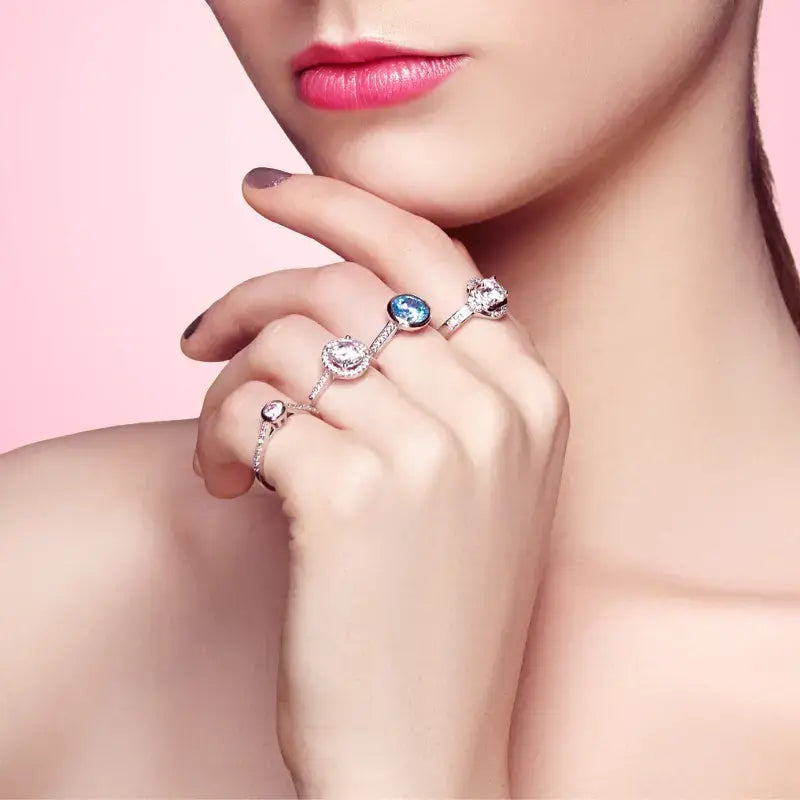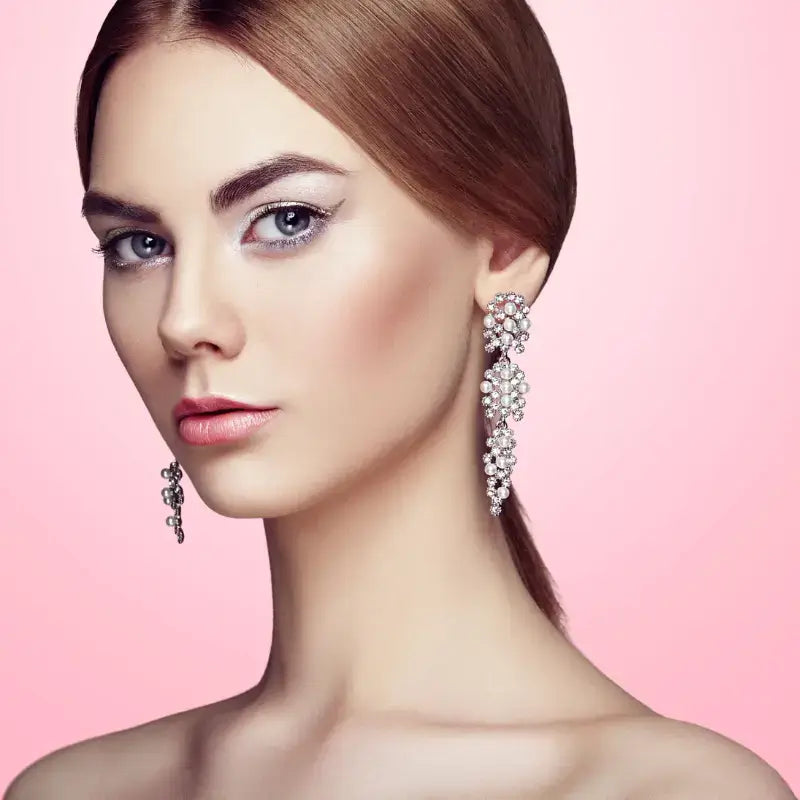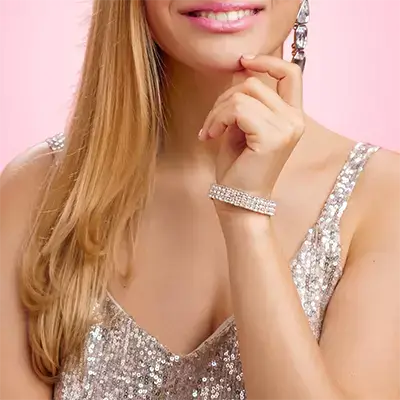The journey to finding the perfect engagement ring is incredibly exciting, but it often comes with a daunting question: "How much should I really spend?" For years, the outdated "three-month salary rule" cast a long shadow, creating undue pressure and confusion. At Chantal Vaulet, we believe in empowering you with transparent, up-to-date data, not antiquated traditions.
This 2025 guide dives deep into the true cost of engagement rings, breaking down modern averages, the factors that influence price, and smart budgeting strategies to help you make an informed decision without breaking the bank or compromising on love. Let's conquer this quest for the perfect ring together!

Debunking the Myth: The Outdated "3-Month Salary Rule"
Let's be clear: the notion that you must spend three months' salary on an engagement ring is a relic of aggressive marketing campaigns from the mid-20th century. It was never a rule of thumb, but a highly effective sales tactic by diamond cartels to inflate perceived value.
In 2025, this rule is not only irrelevant but potentially damaging to your financial well-being. Your engagement ring budget should reflect your personal financial situation, your values, and what feels right for you and your partner – not an arbitrary, corporate-invented metric.
The Current Landscape: What's the Average Engagement Ring Cost in 2025?
The data reveals a fascinating range in what couples are spending, influenced by evolving preferences and the rise of lab-grown diamonds. While a single "average" can be misleading, recent studies provide critical insights:
Overall Averages Across Key Reports:
| Source | Year of Data | Reported Average Cost | Key Insights |
|---|---|---|---|
| The Knot | 2024 | $5,200 | Based on their comprehensive Jewelry & Engagement Study, a widely cited industry benchmark. |
| Brite.co | 2025 (Projected) |
$5,187.55 (Lab-Grown) $10,760.09 (Natural) |
Provides a critical differentiation by diamond origin, highlighting the shift. |
| Synchrony | 2025 (Projected) | $5,500 | Emphasizes the variability of costs based on customization and market trends. |
| Brilliant Earth | 2025 (Projected) | $5,000 - $10,000 | Acknowledge a broader range, underscoring the impact of diamond size and quality. |
| Synthesis | 2025 | $5,000 - $7,500 | Many couples aim around the $6,500 mark. |
The takeaway: While the overall average hovers around $5,000 - $7,500, this figure is heavily influenced by the growing popularity and affordability of lab-grown diamonds. Natural diamond averages can still push well into the five figures.
Natural vs. Lab-Grown Diamonds: A Major Cost Factor
One of the most significant shifts in engagement ring spending is the rise of lab-grown diamonds. Chemically, physically, and optically identical to natural diamonds, they offer a compelling value proposition.
| Diamond Type | Cost Comparison (Approx. for similar specs) | Key Advantage |
|---|---|---|
| Natural Diamond | 2x - 4x the cost of a lab-grown diamond | Rarity, traditional prestige, finite resource. |
| Lab-Grown Diamond | Significantly more affordable; often 50-75% less than natural | Ethical sourcing, larger size for the budget, modern choice. |
This stark price difference allows couples to achieve a larger, higher-quality stone for their budget if they opt for lab-grown, fundamentally altering the "average" spend.
Factors That Actually Influence Engagement Ring Cost
Beyond natural vs. lab-grown, several key elements dictate the final price of an engagement ring. Understanding these will give you your competitive advantage in the jewelry market:
1. The Four C's (Diamond Quality)
- Carat: This is the weight of the diamond, not necessarily its size. Larger carat weight generally means higher price, but slight drops (e.g., 0.90 ct instead of 1.00 ct) can save significantly.
- Cut: The most crucial "C" for brilliance. A well-cut diamond reflects light optimally, making it sparkle. Poor cut can make a larger diamond look dull.
- Color: Diamonds are graded from D (colorless) to Z (light yellow/brown). Colorless diamonds are the most expensive, but nearly colorless (G-I) often look just as stunning without the premium price.
- Clarity: Measures the presence of inclusions (internal flaws) and blemishes (external flaws). "Eye-clean" diamonds (VS1, VS2, SI1) are often perfect to the naked eye without the cost of flawless grades.
2. Metal Type
The choice of metal for the band also impacts cost and durability:
- Platinum: The most expensive, but also the most durable and naturally white (never fades). Hypoallergenic.
- Gold (18K vs. 14K): 18K is 75% pure gold, richer in color, but softer. 14K is 58.3% pure gold, more durable and slightly less expensive. Available in yellow, white, and rose gold.
- Palladium: A less common, hypoallergenic, naturally white metal, similar to platinum but lighter.
3. Setting Style
The complexity and amount of metal or side stones in the setting can significantly affect the price:
- Solitaire: Often the most affordable, a single diamond on a plain band. Elegant and classic.
- Pavé: Small diamonds set closely together along the band, adding sparkle but increasing cost.
- Halo: A circle of smaller diamonds surrounding the center stone, enhancing its perceived size and brilliance, increasing cost.
- Three-Stone: A center stone flanked by two smaller diamonds, symbolizing past, present, and future.
- Custom Designs: Can be significantly more expensive due to unique craftsmanship and labor.
4. Gemstone Type (If not a Diamond)
While diamonds are traditional, many couples opt for alternative gemstones, which can dramatically lower costs:
- Sapphire, Ruby, Emerald: Classic, durable, and often more affordable than diamonds, though high-quality specimens can be costly.
- Moissanite: A brilliant, lab-created gemstone that resembles a diamond but at a fraction of the cost.
- Other Gemstones: Aquamarine, morganite, opal, etc., offer unique beauty and can be very budget-friendly.
Modern Budgeting Strategies: Spend Smart, Not Just More
Forget the old rules and embrace a modern approach to budgeting that aligns with your financial reality and values.
- Communicate with Your Partner: This is the most crucial step. Discuss expectations, finances, and what's truly important to both of you. This ensures the ring is a symbol of shared love, not financial stress.
- Set a Realistic Range: Instead of a single number, establish a comfortable minimum and maximum you're willing to spend. This gives you flexibility.
- Prioritize the Four C's: Decide which "C" is most important to you. Want a bigger stone? You might compromise slightly on color or clarity. Want maximum sparkle? Prioritize cut.
- Consider Lab-Grown Diamonds: If budget is a concern but you desire a larger, brilliant stone, lab-grown diamonds are an excellent, ethical choice.
- Explore Alternative Gemstones: Don't dismiss beautiful, durable gemstones that can offer a unique, personalized ring at a lower price point. Consider our moissanite rings for exceptional value.
- Finance Wisely (If Necessary): If you choose to finance, opt for low or 0% interest options if available, and ensure you can comfortably make payments without accumulating debt.
- Future-Proof Your Purchase: Consider if the ring can be upgraded or reset later. Many jewelers offer upgrade programs.
Ready to Find Your Perfect Ring?
Our experts at Chantal Vaulet are here to guide you through every step, ensuring you find an engagement ring that perfectly symbolizes your love story and fits your budget. At Chantal Vaulet, our high-quality moissanite and lab-grown diamond engagement rings typically range from $800 to $4,500 USD, offering exceptional beauty and value.
Ready to Find Your Perfect Ring?
Our experts at Chantal Vaulet are here to guide you through every step, ensuring you find an engagement ring that perfectly symbolizes your love story and fits your budget. At Chantal Vaulet, our high-quality moissanite and lab-grown diamond engagement rings typically range from $800 to $4,500 USD, offering exceptional beauty and value.
Explore Our Engagement Ring CollectionConclusion: Your Love, Your Budget, Your Ring
The ultimate truth about how much to spend on an engagement ring is that there is no universal "right" answer. The average engagement ring cost in 2025 provides a useful benchmark, but your competitive advantage lies in making an informed decision that reflects your unique circumstances.
Whether your budget is $1,000 or $10,000+, focus on transparency, quality, and most importantly, the profound meaning behind the ring. It's a symbol of your commitment, love, and future together – and that's priceless.








